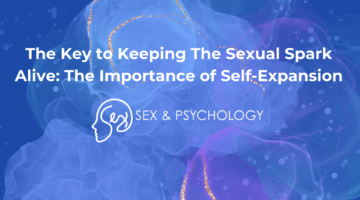When Strong Emotions are Mistaken for Sexual Attraction
July 25, 2016 by Justin Lehmiller
A lot of reality dating shows share the same premise: one contestant goes on a series of brief dates–each with an attractive stranger–and then decides who he or she would like to continue seeing off-screen. I’ve seen more than my fair share of these shows in my day–all for research purposes, of course–and have found that I’m often pretty good at figuring out who the contestant is going to select by paying attention to just one thing: how physiologically arousing were the activities that took place during the mini-dates? Did they do something active and exciting, or did they just sit around?
Why do I focus on this? Because a large body of psychological research has found that when people are highly aroused and interact with a stranger of their desired sex, the odds of attraction increase.
In a classic demonstration of this idea, originally published in the 1970s, an attractive female research assistant approached men who happened to be walking across one of two bridges in Canada: a very high and unstable suspension bridge (an anxiety-inducing experience) or a bridge that was stable, close to the ground, and not scary at all [1]. In the middle of the bridge, the men were asked to fill out a survey, which included writing a short narrative about a picture. Upon completion, the woman provided each man with her phone number and asked him to give her a call later that night if he wanted to talk further.
It turned out that the men who walked across the shaky bridge not only included more sexual content in the stories they wrote, but they were also significantly more likely to call the woman compared to the men who walked across the stable bridge.
Numerous studies have found similar effects with different methods. For instance, in another study, male participants were asked to run in place for either a few minutes or a few seconds [2]. Afterward, they rated their degree of sexual and romantic attraction toward a female college student they observed in a video. The researchers found that the men who exercised longer were more attracted to the woman than the men who did not get their blood pumping as much.
This effect isn’t limited to men either. For example, in one study, female participants were either led to believe that their heart rate was elevated or not by researchers who provided false feedback from a heart rate monitor [3]. Following this, the women were told that a male interviewer had either given them a positive, negative, or neutral evaluation.
The “aroused” women who received positive feedback were significantly more likely to return for a second interview than the “nonaroused” women who received the same feedback.
How do we explain these effects? What psychologists think is going on is that people are misattributing their physiological arousal to the person instead of to the situation. That is, when there are competing explanations for strong feelings of arousal–specifically, you aren’t sure if your heart is pounding because you just exercised or because you just met someone who’s really sexy–people seem to err on the side of attributing their arousal to the new person instead of to the situation.
Bottom line: when you meet someone new and you’re already feeling aroused, it’s quite possible that you might unknowingly end up seeing them as more attractive than you otherwise would because you’ve mistaken them as the true source of your arousal.
Want to learn more about Sex and Psychology ? Click here for previous articles or follow the blog on Facebook (facebook.com/psychologyofsex), Twitter (@JustinLehmiller), or Reddit (reddit.com/r/psychologyofsex) to receive updates.
[1] Dutton, D. G., & Aron, A. P. (1974). Some evidence for heightened sexual attraction under conditions of high anxiety. Journal of Personality and Social Psychology, 30, 510-517. doi:10.1037/h0037031
[2] White, G. L., & Kight, T. D. (1984). Misattribution of arousal and attraction: Effects of salience of explanations for arousal. Journal of Experimental Social Psychology, 20, 55-64. doi:10.1016/0022-1031(84)90012-X
[3] Walsh, N., Meister, L., & Kleinke, C. (1977). Interpersonal attraction and visual behavior as a function of perceived arousal and evaluation by an opposite sex person. The Journal of Social Psychology, 103, 65-74. doi: 10.1080/00224545.1977.9713297
Image Source: 123RF.com/Elaine Boisseau-Beville
You Might Also Like:

Dr. Justin Lehmiller
Founder & Owner of Sex and PsychologyDr. Justin Lehmiller is a social psychologist and Research Fellow at The Kinsey Institute. He runs the Sex and Psychology blog and podcast and is author of the popular book Tell Me What You Want. Dr. Lehmiller is an award-winning educator, and a prolific researcher who has published more than 50 academic works.
Read full bio >


